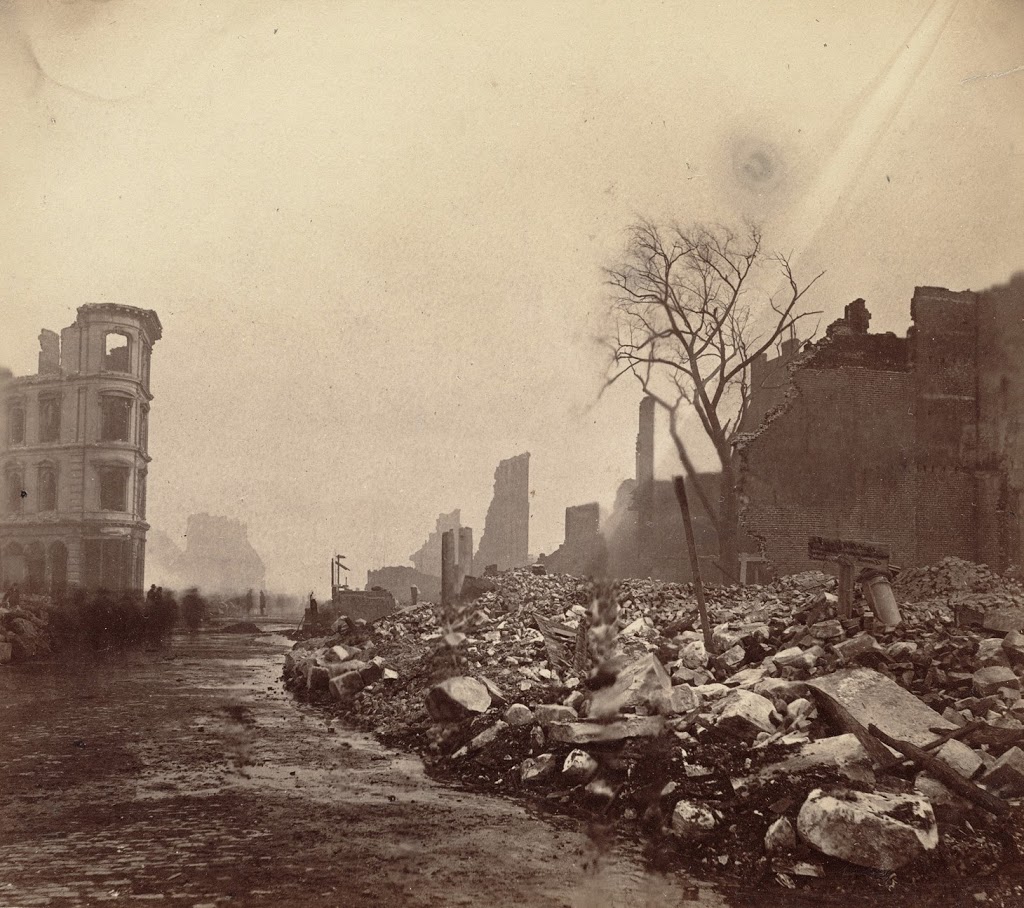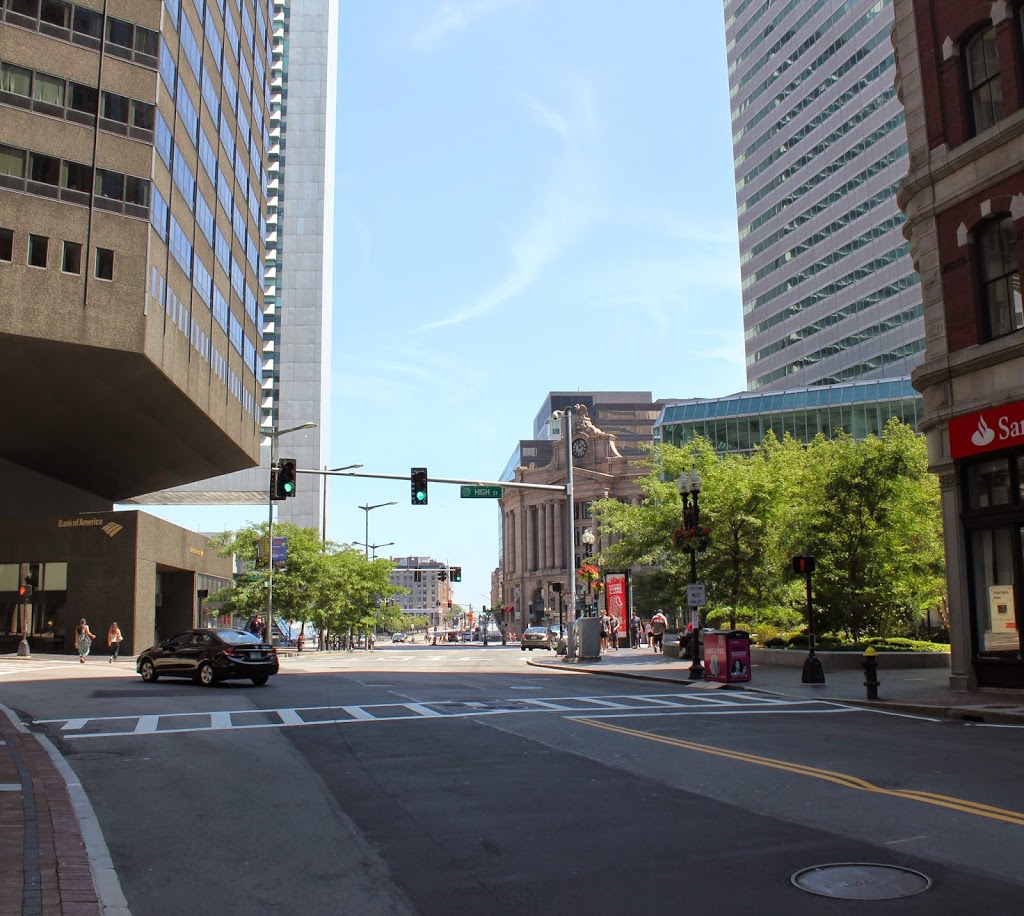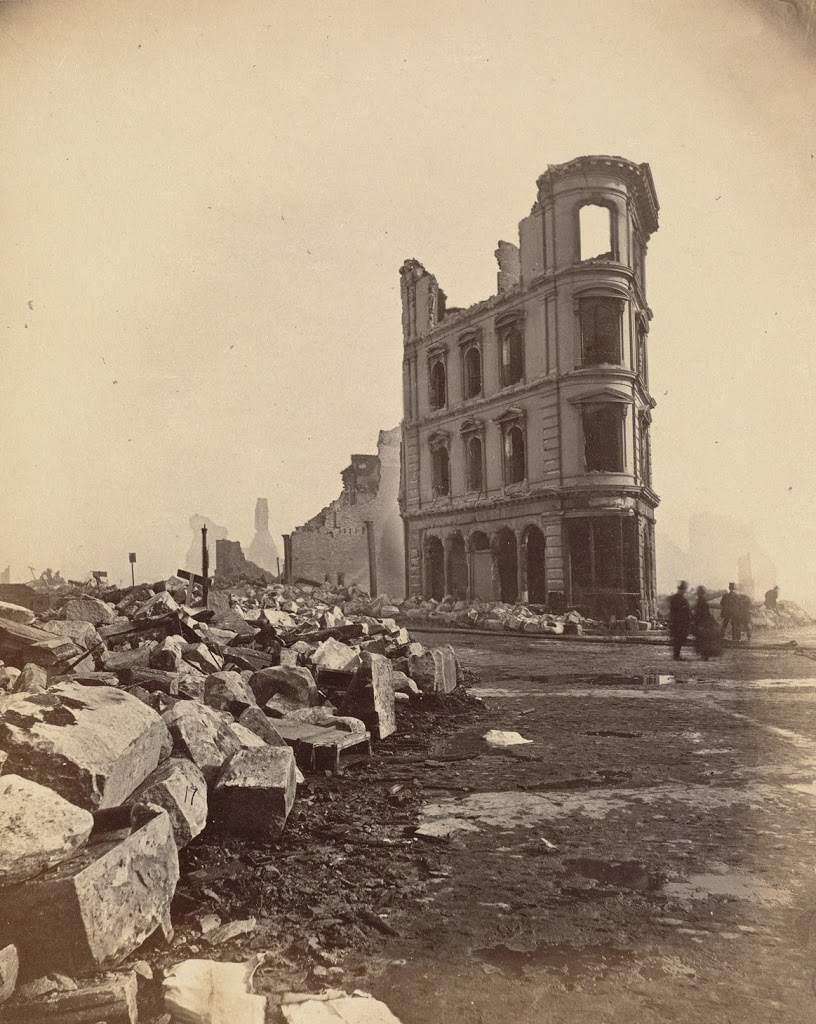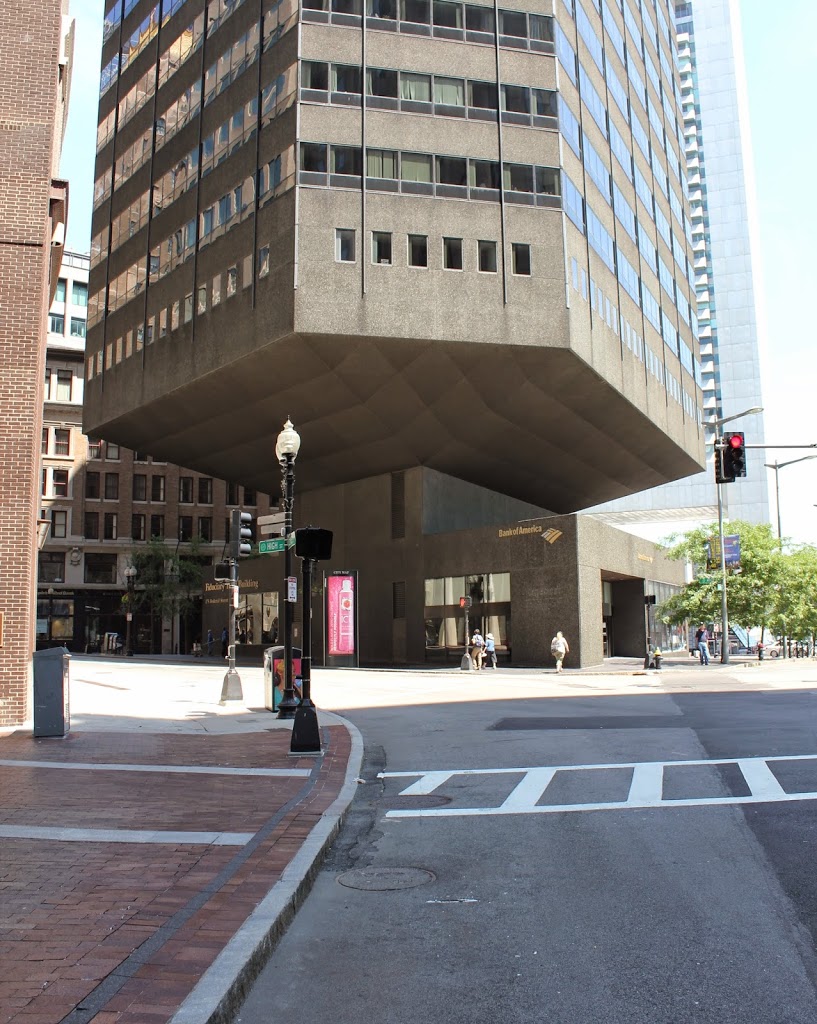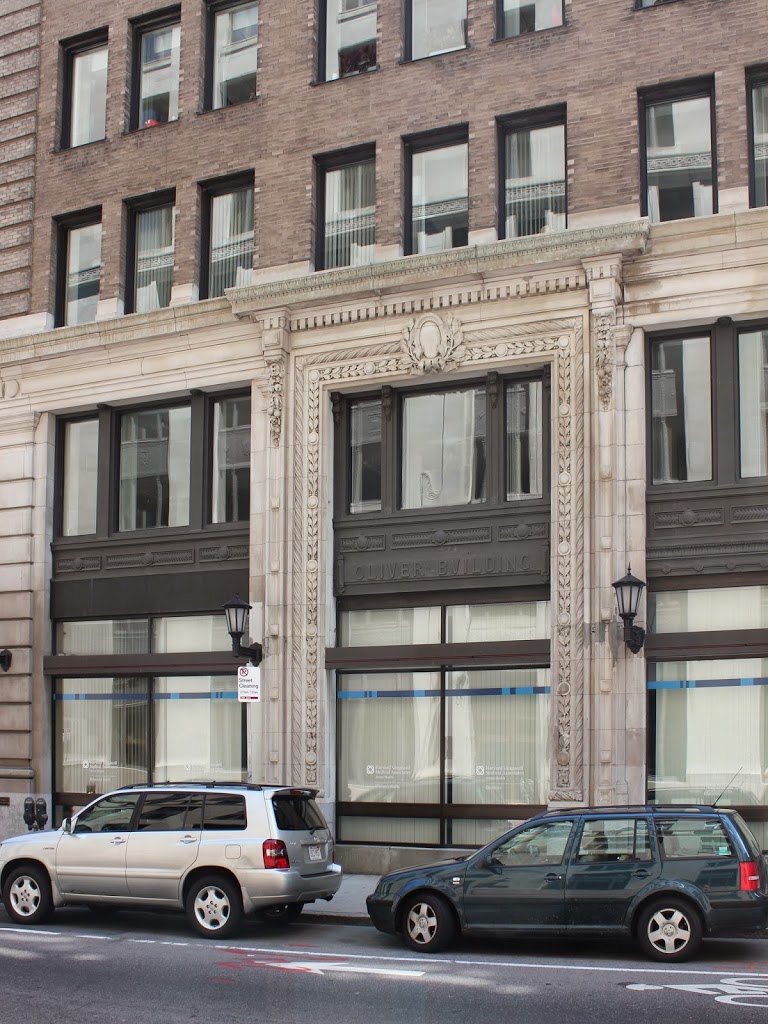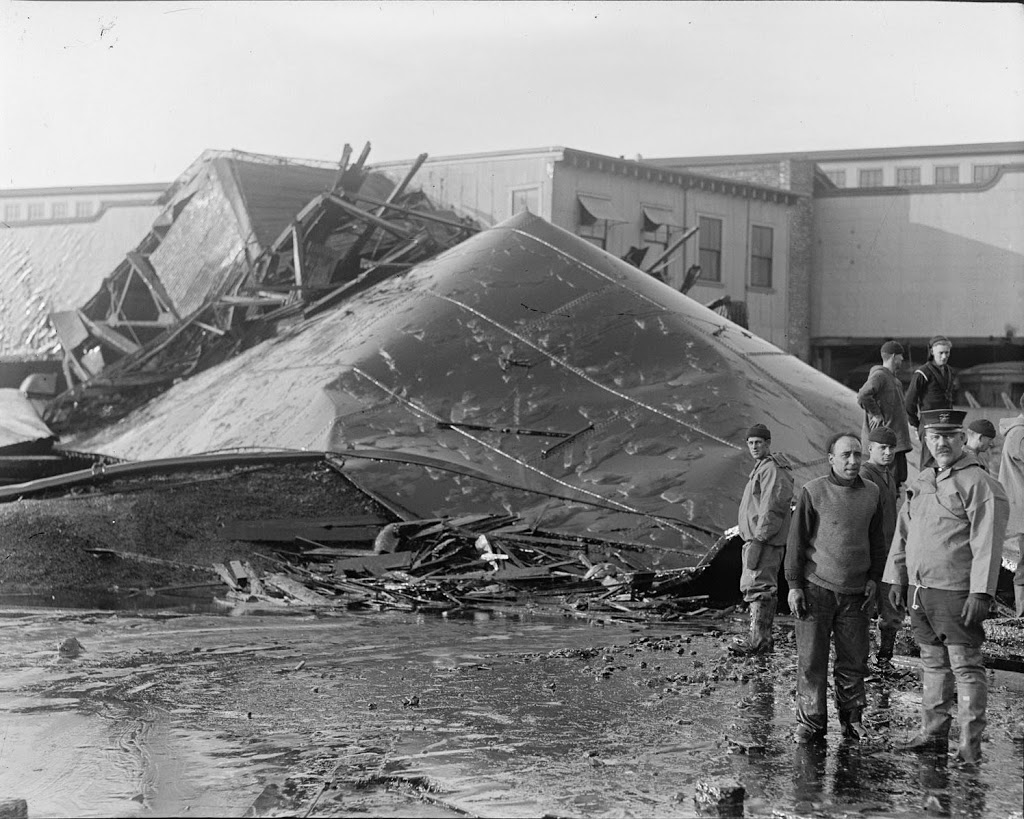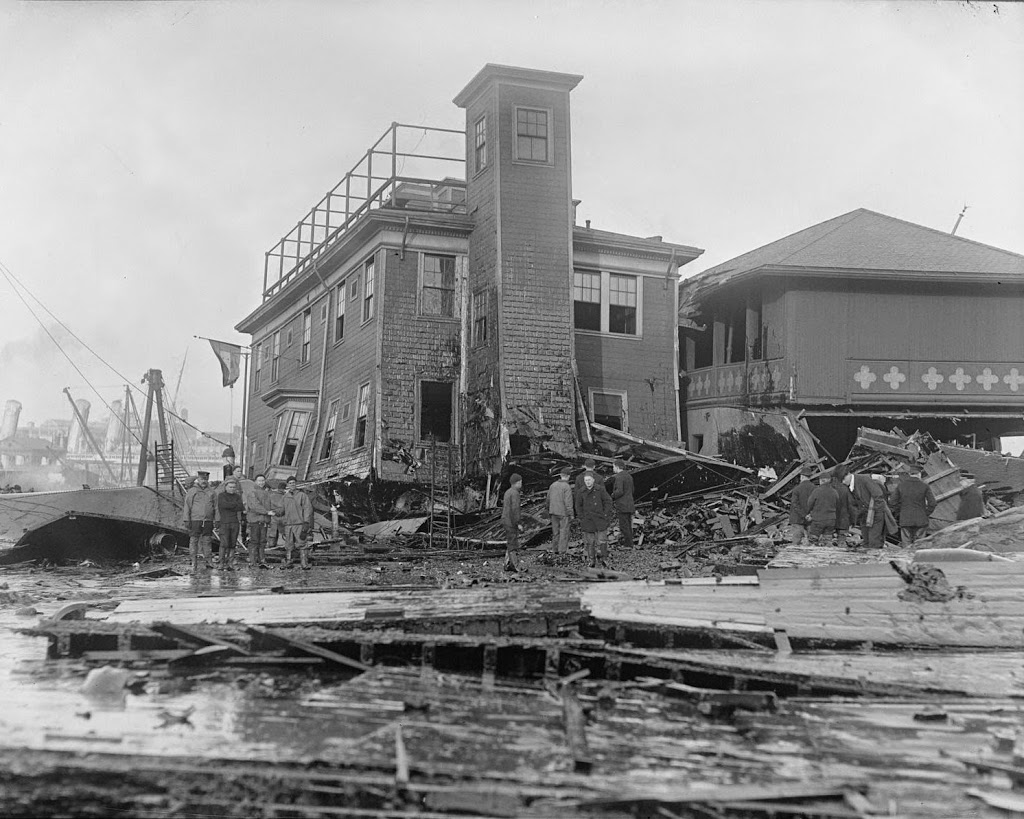Looking south on Summer Street with High Street on the left, after the Great Boston Fire of 1872. Photo courtesy of Boston Public Library.
The scene in 2014:
Taken facing just to the right of the photos in this post, this angle shows the view looking south on Summer Street. The first photo shows some of the absolute devastation that Boston suffered in the wake of the 1872 fire, which burned about 65 acres of land and 776 buildings. By way of comparison, the Great Chicago Fire, which occurred a year earlier, burned over 2,000 acres and destroyed 17,50 buildings. However, like Chicago, Boston recovered well. The second photo shows a very different Boston nearly a century and a half later; this area is a major center for business and transportation, with South Station in the distance, and many banks and other institutions having offices here.

